Tuol Sleng Genocide Museum, Phnom Penh, Cambodia || Sobering History of a Nation that has been Reborn
Between 1975 to 1979, a communist regime called the Khmer Rouge took control of Cambodia. This regime, though initially thought to be the saviors of the nation, inflicted a genocide that caused the death of about 1/4 of the population of Cambodia. The Tuol Sleng Genocide Museum in Phnom Penh is a sobering reminder of those times.
Before the Khmer Rouge's reign started, this building was a high school. Within 4 months of Khmer Rouge winning the Cambodian Civil War, the building was converted into a prison and interrogation center. Class rooms were converted to torture chambers and holding cells, where the prisoners were kept captive in inhuman conditions. Nearly 17000 prisoners passed through this prison between 1975-1979. Today, some relics of those terrible times still remain in the museum. This room, in the photograph above, was a torture chamber. When Vietnamese army discovered this prison in 1979, they found a prisoner tied to the bed in the room. The prisoner had apparently died during interrogation and the body was already decomposing when the prison was discovered. The photograph of the body as it was discovered still hangs here.
It is shocking how deceptive the building is. At the first glance, it still looks like a normal school. Only when you go into the rooms that once used to be the classrooms or take a closer look at the grounds do you discover the horrors. Upon entering the museum, you can choose to rent an Audio guide if you are alone or a group (human) guide, many of whom are survivors of the Khmer Rouge period. It is a good idea to take either the audio or the group guide because otherwise you may misinterpret some details or miss out on key exhibits.
One of the room contains pictures of hundreds of prisoners who were held captive here. Khmer Rouge were very particular about the documentation. Photographs were clicked when a prisoner entered the prison and for influential prisoners after their death too so that there could be no doubt that the prisoner was indeed dead. Their pages-long "confessions" were kept in the prison records. These confessions were forced out the prisoners through the use of extreme torture. Many prisoners confessed to crimes like treachery, espionage simply to escape further torture. They chose to embrace the execution, which was imminent in such circumstances. Out of the 17,000 prisoners who passed through the prison, only a handful survived. I found one particular photograph most disturbing - it was the mugshot of a female prisoner holding a baby in her arms. Her expressions simply say it all. The prisoner also housed several foreign prisoners. None of them managed to escape.
One room also contained photographs of the guards who manned the prison. They were mostly teenagers and were almost as unlucky as the prisoners. Guards had to be walking around continuously and weren't allowed to sit down, talk to the prisoners, take rest etc. Serious errors could lead to them being arrested and tortured too.
These are the shackles that were used to tie prisoners. While some rooms had separate cells for each prisoner, others simply had rows of prisoners lying next to each other, their arms and legs shackled down. Hygiene was not a priority at all. The prisoners were hosed down with water cannons once in four days, and this was not a schedule that the guards were too particular about.
This is what a cell looked like. This particular cell belonged to one of the 7 survivors of the prison. There are rows of such cells in the rooms.
These are the graves of the last 14 victims of the prison. It is said that these people were killed just before the Khmer Rouge soldiers abandoned the prison as soon as they heard of the arrival of the Vietnamese. The bodies were found in badly mutilated conditions.
Today when you look out from the balcony of the museum, the outside world seems absolutely normal. It is difficult to believe that something so horrible happened here only 4 decades back. Life does move on. However, for thousands of people who lost their lives after being prisoners at Tuol Sleng, it did not. The futures they had dreamed of for themselves were lost forever to the crazy paranoia of a tyrant.
After wrecking havoc on so many families and millions of lives, it is very difficult to accept the fact that Pol Pot, the perpetrator of Khmer Rouge atrocities, died at his home (under house arrest) in 1998. His body was cremated before it could be autopsied, so the rumors that he had committed suicide could never be put to rest.
The grounds of the prison today are quiet and peaceful. Even when there are 100s of visitors in the premises, there's silence. Such is the impact of this place that it is hard to feel any other emotion apart from deep sorrow, anger, and disgust. Even if you are in a group, you will find it difficult to talk to each other.
There is a souvenir shop in the museum, which probably doesn't do much business. It seems inappropriate to buy a fridge magnet or even think of buying one, seconds after seeing the photographs of thousands of innocent people who had their lives cut short. I wonder who came up with the idea of having a shop here. This is definitely not a good idea.
Here is Chum Mey, one of the seven survivors of the prison. He and another survivor, Bou Meng, come to the museum every day to interact with the visitors. They have each written books about their experiences. One was a mechanic and the other was an artist and their skills were useful to Khmer Rouge regime. This was probably the reason why they were spared the horrible fate that awaited rest of the prisoners.
Tuol Sleng Genocide museum is a very difficult place to visit. Go there only if you aren't too impressionable. I am impressionable and I had trouble sleeping for several nights after the visit. Even though the visit left me feeling disturbed, I am thankful to Team4Tech for taking us there. Without visiting the museum or the Killing fields, it is difficult to imagine what Cambodia and its people have been through. It makes to appreciate their large-heartedness and cheerfulness all the more.
Related Blogposts -



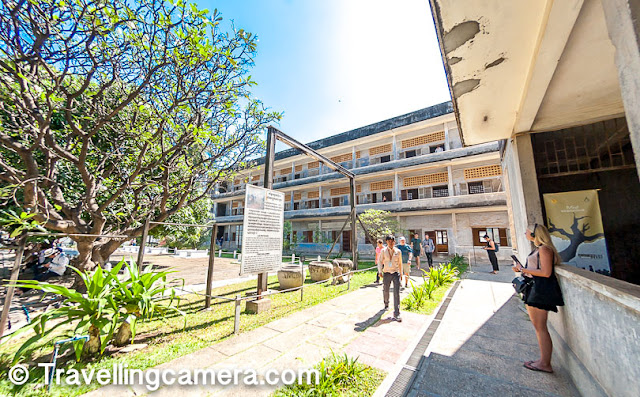

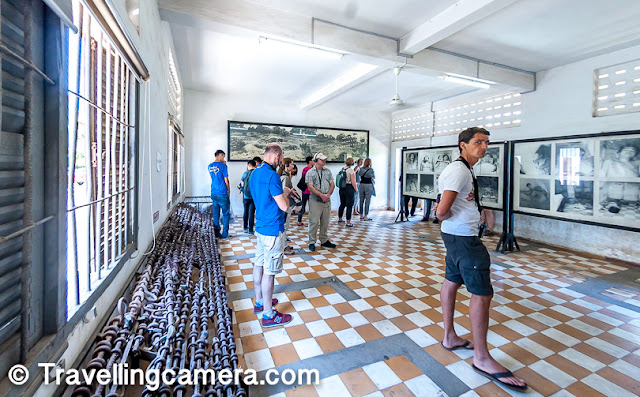


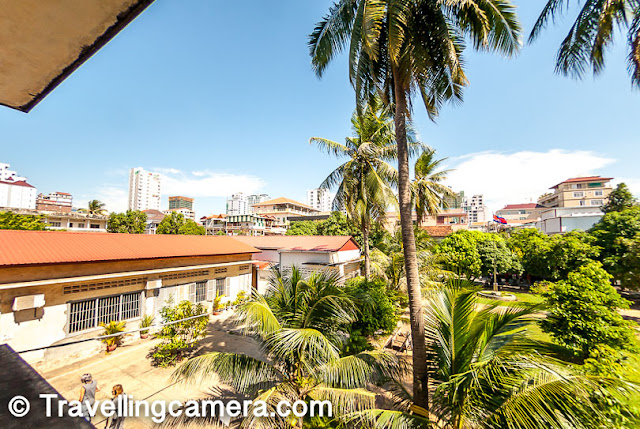


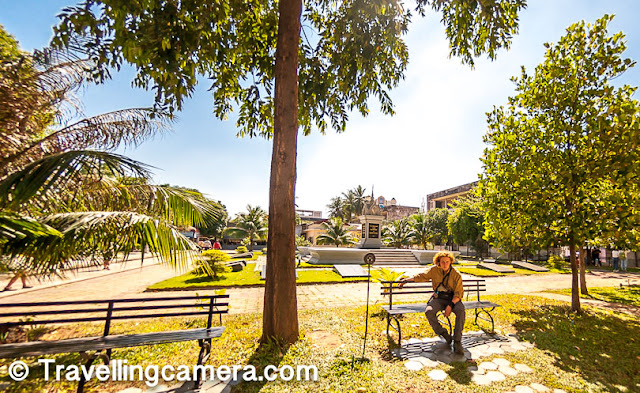

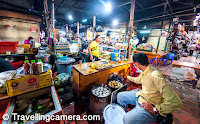



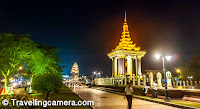















.jpg)
Comments